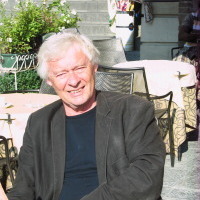Papers by Kristian Berg Harpviken
Security Dialogue, Dec 1, 2001
International Area Studies Review, Sep 1, 2012
This article introduces a framework for the analysis of transnationalization – understood as the ... more This article introduces a framework for the analysis of transnationalization – understood as the process by which non-state groups integrate with transnational actors – that distinguishes between (1) organization, (2) resource mobilization, (3) tactical repertoire and (4) ideological framing. This framework is then applied to an examination of the Afghan Taliban’s relationships to Al-Qaeda, the Pakistani Taliban (and other local militants) and the Pakistani state. Contrary to dominant analyses, the article finds that the transnationalization of the Taliban has been limited. The Afghan Taliban have been concerned both about losing local support and about coming under the influence of actors with objectives very different from their own, and have therefore consciously limited their own integration into transnational networks.
Third World Quarterly, Oct 1, 2003
Focusing on the humanitarian mine action (hma) sector, this article argues that rooting peace bui... more Focusing on the humanitarian mine action (hma) sector, this article argues that rooting peace building in concrete activities carries considerable promise, diversifying the repertoire and enhancing the robustness of peace building. However, the assumption that mine action necessarily contributes to building peace is problematic and permits the neglect of harmful effects and a failure to capitalise fully on the potential
Journal of Peace Research, 2009
Palgrave Macmillan UK eBooks, 2009
Oxford University Press eBooks, Sep 1, 2016
Oxford University Press eBooks, Sep 1, 2016
Third World Quarterly, Aug 1, 1999
Comparative social research, 2010
... IN AFRICA Karin Dokken 333 WEBS OF WAR: MANAGING REGIONAL CONFLICT FORMATIONS IN WEST AFRICA ... more ... IN AFRICA Karin Dokken 333 WEBS OF WAR: MANAGING REGIONAL CONFLICT FORMATIONS IN WEST AFRICA AND CENTRAL AFRICA Stale Ulriksen 355 Page 9. This page intentionally left blank Page 10. LIST OF CONTRIBUTORS Jens Christopher Andvig Pavel K ...
Is the phenomenon of state failure better understood through a focus on the regional context? To ... more Is the phenomenon of state failure better understood through a focus on the regional context? To what extent may studies of regional security benefit from a focus on the capacities and vulnerabilities of the states involved? This title addresses these questions.
Oxford University Press eBooks, Sep 1, 2016
Returning to what used to be home may be just as complicated as arriving in exile. Many of the ch... more Returning to what used to be home may be just as complicated as arriving in exile. Many of the challenges are identical, the coping mechanisms similar. The fundamental challenge of reintegration is spelt out by Laura Hammond (Hammond 1999: 229): Whether a returnee comes back to his or her birthplace or settles in an entirely new environment, he/she considers return to be more of a new beginning than a return to the past.
Comparative social research, 2010
... Applying an RSC logic, we should not find this too surprising: the surrounding regions have s... more ... Applying an RSC logic, we should not find this too surprising: the surrounding regions have strong ... to be tagged as a security complex, it is so at a considerably higher level of abstraction ... The two main actors in relation to Afghanistan are Iran and Saudi Arabia, whose battle for ...
Comparative social research, 2010
... Taking more of a micro-perspective, Jens Christopher Andvig starts out from the observation t... more ... Taking more of a micro-perspective, Jens Christopher Andvig starts out from the observation that state failure can be seen as a symptom of both conflict ... Hence, the theoretical schism that this article grapples with is similar to that discussed in the articles by Grant and Ulriksen. ...

Cooperation and Conflict, Mar 1, 2002
This edited volume is the key reference work to the process that culminated in the 1997 Landmine ... more This edited volume is the key reference work to the process that culminated in the 1997 Landmine Ban Treaty, signed in Ottawa in December 1997, a process that has rightly been described as unique. It was unique in that it took place outside the established international framework for arms control agreements, unique in terms of its close interaction between governments and non-governmental actors, and unique in terms of sheer speed. In September 1996, the then Canadian Minister of Foreign Affairs, Lloyd Axworthy, concluded a meeting of supportive governments in Ottawa by inviting them back for a signatory meeting 14 months later. Axworthy’s invitation was met with a great deal of scepticism; nevertheless, a comprehensive Landmine Ban Treaty was negotiated in Oslo in September 1997 and signed in Ottawa in December the same year. The International Campaign to Ban Landmines (ICBL) and its coordinator, Jody Williams, were awarded the 1997 Nobel Peace Prize. Reflecting on what made the Treaty possible is important, not least because the Treaty has been seen as representative of a new trend in international politics, and as a model for new transnational movements (Florini, 2000; Rutherford, 2000). The book aims at offering something to a variety of audiences, including academics, policy-makers, activists, and the general public. This editorial strategy is a double-edged sword. On the one hand, it gives a fair representation of the diversity of actors that were behind the campaign, and most readers will find at least parts of the book interesting. On the other, the book stands out as fragmented, containing contributions that range from popularized and uncritical tales of campaign successes, to critical scholarly analyses. This weakness could in part have been compensated for with an editorial introduction to the contributions. The book’s editors are all Canadian. Cameron and Tomlin are at Carleton University, while Lawson is at Canada’s Department of Foreign Affairs and International Trade (DFAIT). Contributors to the volume include activists, government officials, and academics. The book consists of three parts. The first focuses on organizations and campaigns promoting the ban, all written by people who were directly involved. The second part of the book focuses
Lynne Rienner Publishers eBooks, 2010











Uploads
Papers by Kristian Berg Harpviken